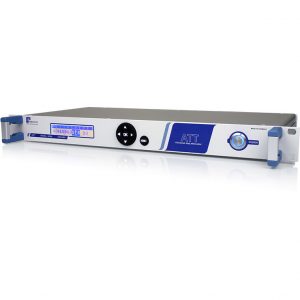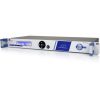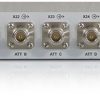
QATT-7G 4 Channel Programmable Step Attenuator
QATT-7G 4 Channel Programmable Step Attenuator device is even more wide-band and covers the frequency range 100 kHz … 7000 MHz. The attenuation can be adjusted independently for each channel with high accuracy in a wide dynamic range.
*Adjustable Attenuation
Each of QATT-7G´s four channels is based on wear-free semiconductor switches. The channels can be set independently in 0.25 dB steps with very high accuracy. The wide attenuation range extends from 0 dB up to 95.25 dB. QATT-7G is suitable for the frequency range 100 kHz … 7000 MHz.
*Multiple Control Modes
QATT-7G offers multiple control modes for quick adjustments.
The desired attenuation can be set manually using the operating elements at the front panel. QATT-7G can be controlled using ASCII strings via LAN and USB interface. On top of that, QATT-7G features a clearly arranged web interface for location-independent operation of the device regardless of the user’s operating system also for multiple devices in a single network.
*Synchronous Operation
Like many other products of Becker Nachrichtentechnik GmbH, this device offers a TRIGGER IO port. This interface provides a trigger pulse which complies with the physical execution of the applied switching command. On the other hand, external pulses can be applied to this port in order to trigger the execution of queued switching commands. Therefore, it is possible to link multiple devices to a synchronous switching compound.
*Compact Design
Due to its compact design in 19”, QATT-7G is ideally suited for use in laboratories as a tabletop unit. The practical design allows mounting the device in system racks as well.
*Applications
QATT-7G is able to vary signal amplitudes. In applications where various signal sources have to be modified in their level, QATT-7G is used in order to adjust the level of each signal individually.
QDLL is a programmable delay line and complements the attenuators QATT and QATT-7G.
Using the devices QDLL, QATT and QATT-7G, reproducible test scenarios can be created. As an example, recorded data of an antenna array can be used to emulate the antenna array in laboratory environment using QDLL.



